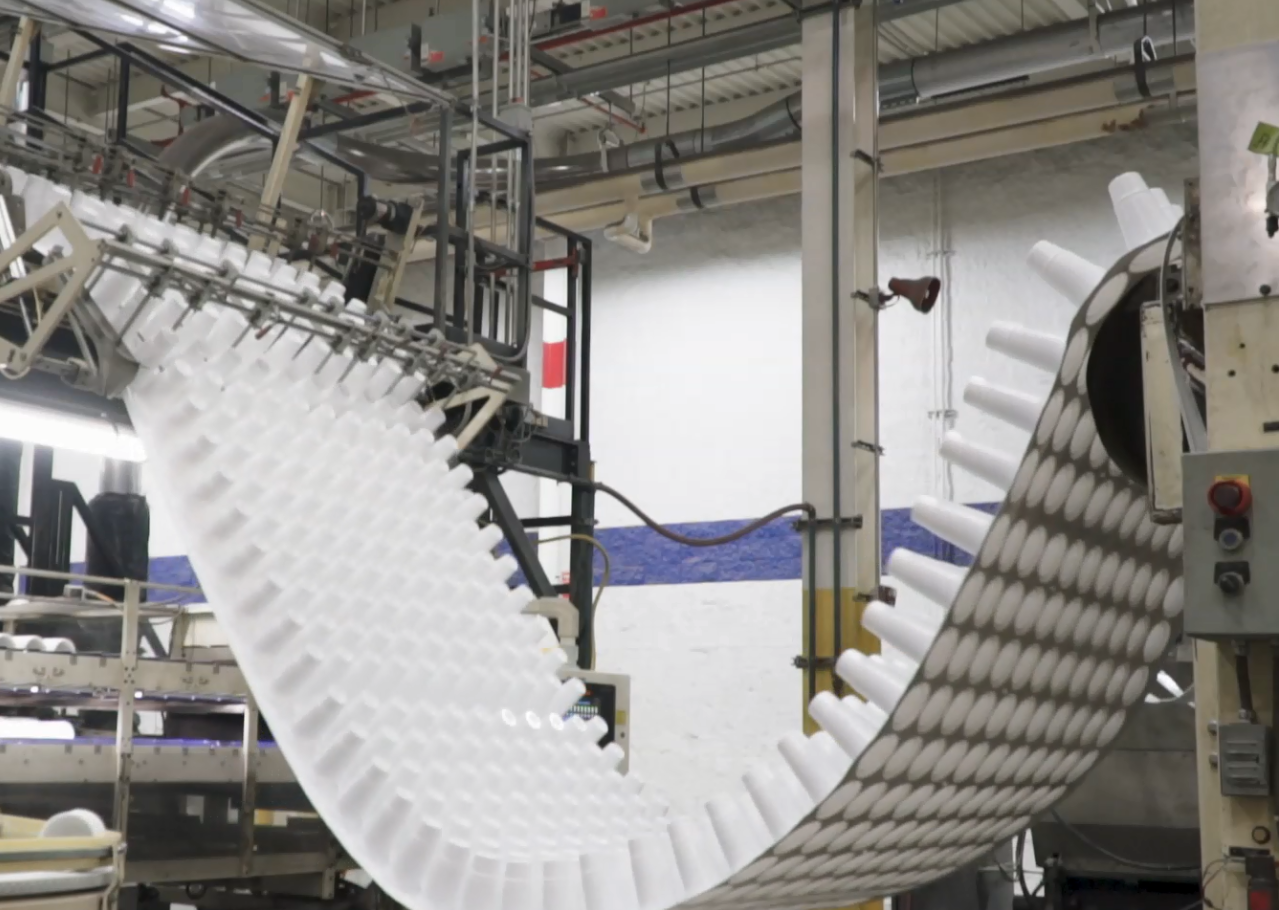Next time you get a drink from the drive-thru, take a closer look at the cup – it’s most likely thermoformed. Many packaging products, including drink cups, containers, and lids are made with the thermoforming process because of its ability to produce extremely high volumes of products at very high speeds. Berry has pioneered and mastered high-volume “deep-draw” thermoforming for tall objects like cups.
thermoforming process
Thermoforming can produce at such a high volume because of its large scale, speed, and continuous operation. Pellets or granules of plastic resin are fed from a hopper into a machine which heats, blends, and extrudes the resin out into a sheet form. That sheet is heated to a specific temperature that’s perfect for forming cups, containers, or lids. The heated sheet eventually makes its way over a series of molds and a combination of air and mechanical means to form the plastic into the mold to create a formed product. Then the sheet separates from the mold and it continues down the line to trim and sort the parts, and send the unused sheet back to be reground and fed back into the system.
Design considerations for thermoforming
Thermoform product designs are generally limited by the amount of stretch required by the material to accomplish the design. For example, some drink cups are relatively tall for their diameter. There is a limit to how deep a cup can be formed at a given diameter. If the limits are pushed too far, the product won’t fully form to the mold, or there will be paper thin areas that render the product unusable. In packaging applications, we try to optimize sheet thickness to minimize part weight while maintaining maximum function and performance.
Most thermoformed packaging products are made with polyethylene terephthalate (PET), polypropylene (PP), or polystyrene (PS). PET and PP are great choices for food and beverage applications for different reasons. PET offers a high level of clarity for great food visibility, while PP works well in the microwave for heating applications and is resistant to cracking. PS can be formed with very thin sheet for great visual detail, but can be brittle and crack more easily than PP.
Thermoforming vs. injection Molding
Thermoforming is a process of using an extruded and heated sheet of plastic material and a combination of air and mechanical means to form the plastic into the mold to create a formed product. Injection molding is a process that uses two mold halves, called a core and cavity, which clamp together and leave a void for plastic material to be injected into.
Thermoforming is capable of producing extremely high volumes of very lightweight products so it is generally a more cost-effective option than injection molding for mass producing consumer packaging products that have a suitable application.
Single use products are a good fit for thermoforming because of its efficient use of recyclable materials and high-volume cost effectiveness. Some examples of commonly thermoformed packaging products include food service containers, drink cups and lids, yogurt cups, and frozen meal containers. Another common application is with products that require a high level of moisture and/or oxygen protection like coffee pods. The extruded sheet used in thermoforming can contain multiple layers of specially engineered materials that can block moisture and oxygen penetration.
Injection molded packaging products can serve some of the same product categories as thermoforming with recyclable and light weight containers. However, injection molding can also be used to produce more durable containers and cups, threaded and flip-top closures, and premium jars. Injection molding also provides an option for high quality decoration through in-mold labeling (IML), which can also offer moisture and oxygen protection. Additionally, injection molding is capable of a bi-injection process which allows for two materials to be bonded together in the same part, such as a soft grip on a medicine closure.
In Conclusion
Thermoforming technology has a lot to offer for a variety of packaging applications. It is capable of producing high volumes of recyclable lightweight products at high speeds in a cost-effective way.
Whether you’re looking for foodservice packaging, frozen food containers, or protection from moisture and oxygen, thermoforming might be the best manufacturing technology choice for your application.


